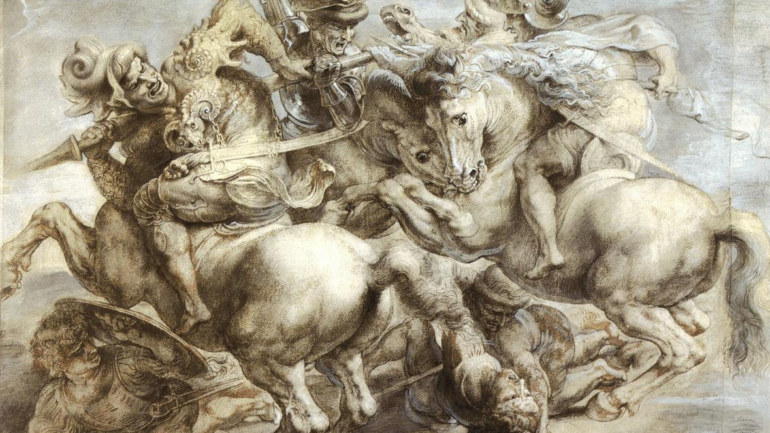Today, we will discuss Masaccio (Masaccio), the second great painter of the Renaissance after Giotto.
Masaccio is significant to the Renaissance because he laid the foundation for the application of perspective in painting—a cornerstone of Renaissance art.
Masaccio: The Pioneer of Perspective
- Masaccio’s Importance in the Renaissance
Masaccio was instrumental in establishing perspective in painting, which became a cornerstone of Renaissance art. During this era, artists sought to study nature more realistically and scientifically, striving for authenticity and a sense of three-dimensionality in their works. Perspective provided Renaissance painters with a powerful scientific tool to depict nature accurately. - A Member of the “Brilliant but Short-Lived” Club
Masaccio belonged to the group of geniuses who died young. While Mozart lived to 35 and Raphael to 37, Masaccio’s life was even shorter—he passed away at only 27. Had he lived longer, his achievements might have rivaled those of the renowned “Renaissance Masters” we know today. - The “Clumsy Thomas”
Masaccio, an Italian, was actually nicknamed “Clumsy Thomas” (Masaccio means “Clumsy Tom”). His real name was Tommaso. He earned this nickname because he was often so absorbed in painting that he spoke incoherently and appeared eccentric. Masaccio was a good friend of Filippo Brunelleschi, the architect of the Florence Cathedral dome, and it was from this friend that Masaccio learned perspective. Initially a concept from architecture, perspective was introduced into painting by Masaccio. - What is Perspective?
Perspective upgraded the Greek technique of foreshortening, or “larger near, smaller far,” by clarifying proportional scaling and establishing mathematical principles. With the advent of perspective, it became possible to accurately depict three-dimensional objects on a flat surface. The scientific essence of the vivid Renaissance paintings we see today derives from the application of perspective. - The Concept of Vanishing Point
In simple terms, perspective means that all parallel lines in the real world should converge at a single point in a painting. Even if they don’t physically intersect in the picture, their extensions must converge at one point. The introduction of the vanishing point revolutionized painting methods. Artists could first determine the vanishing point on the canvas, draw radiating lines outward from it, and then draw horizontal lines. By dividing the canvas into small grids, they could proportionally determine the placement of buildings and figures to create a completed painting. This adherence to real-world rules made the images vivid and lifelike. - An Innovative and Rebellious Painter
Masaccio was highly original and innovative, even rebellious. In his famous altarpiece, he “dared” to depict an angel with its back to the audience. At the time, angels in paintings were always shown facing forward or at least looking toward the audience. In another work illustrating the story of Adam and Eve, Adam is depicted completely nude. This was bold for the early 15th century, when the Church held immense power. However, Masaccio adhered to the biblical narrative, maintaining realism and striving for authenticity. - Pioneering Three-Dimensionality
Masaccio used perspective to create an unprecedented sense of depth in his paintings. His fresco The Holy Trinity caused a sensation. Although painted on a flat wall, it gave the illusion of receding into the wall, with the depth treatment making the figures incredibly lifelike and delivering a powerful visual impact. While such effects may seem commonplace today, they were groundbreaking at the time, following a thousand years of distorted, formulaic art under medieval rule. Masaccio’s works not only shocked people visually but also challenged their religious beliefs.
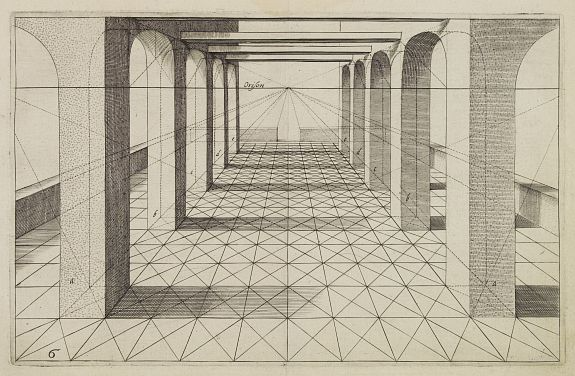
With the advent of perspective, painters began by determining the vanishing point, then creating a grid, and finally proceeding with their artwork.
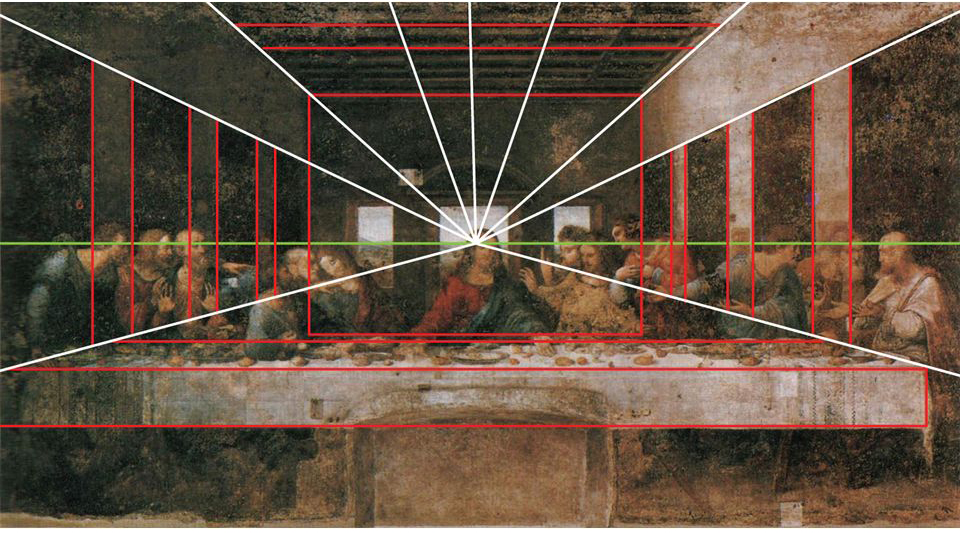
The Application of Perspective and Vanishing Point in The Last Supper
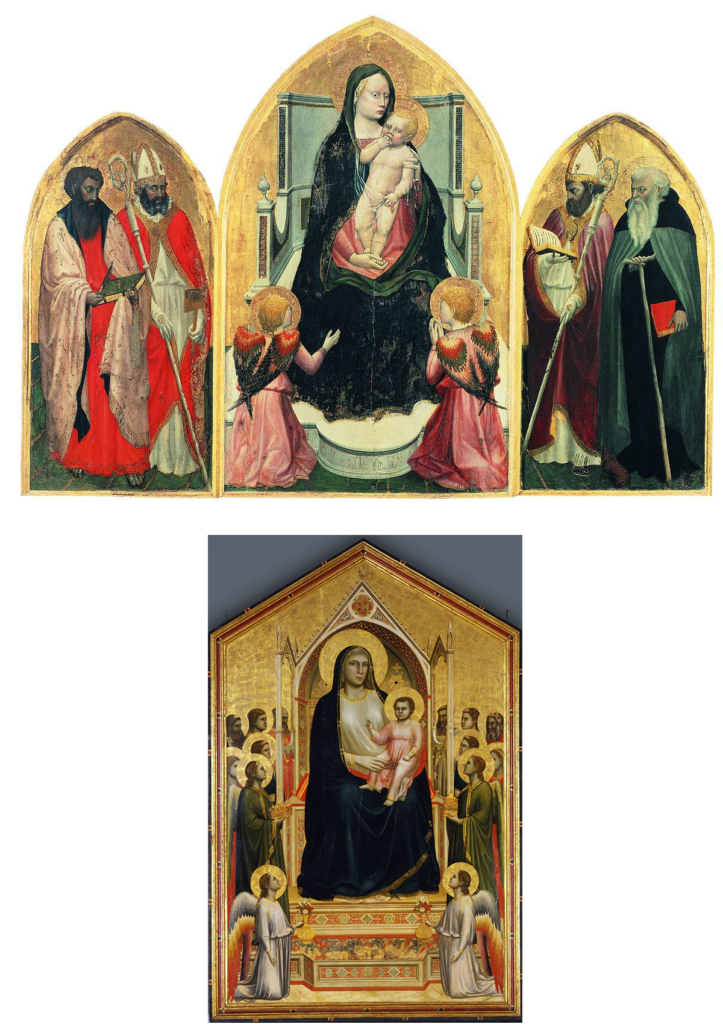
- Top Image: Masaccio’s Altarpiece
- Bottom Image: Giotto’s Altarpiece
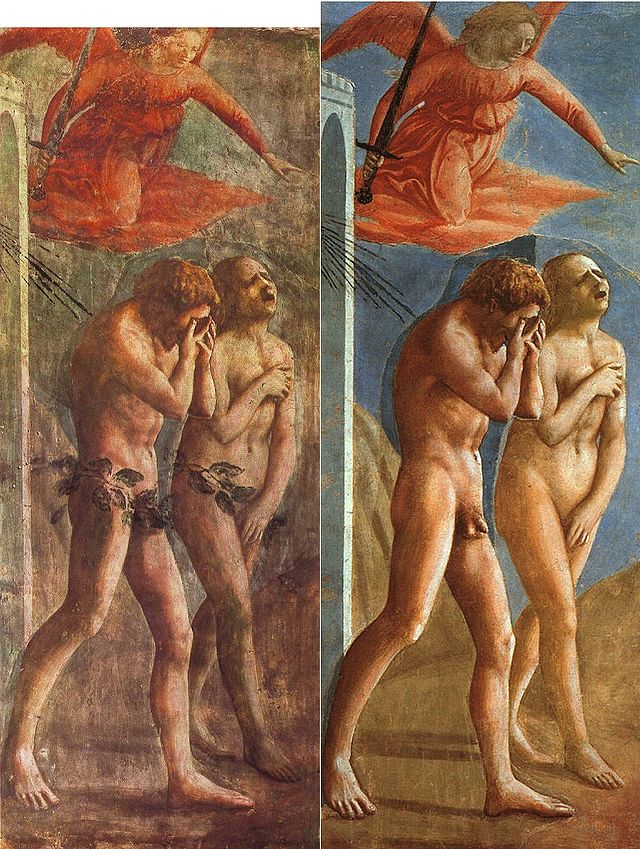
Masaccio – The Expulsion from Paradise
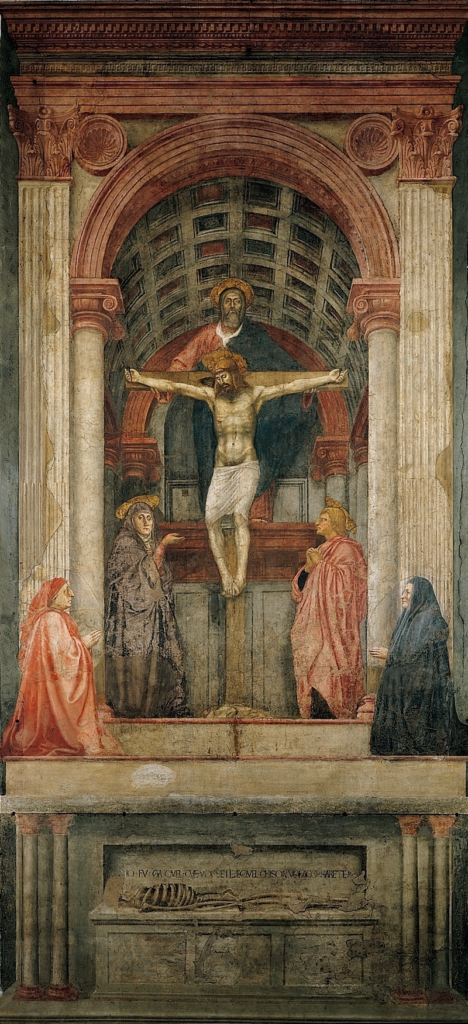
Masaccio – The Holy Trinity Fresco
Quick Fact: The Black Death Delayed the Renaissance by 100 Years
We’ve discussed Giotto, the first great painter of the Renaissance, born in 1266. When we move on to the second great painter, Masaccio, we find ourselves already in 1402. Why was there such a long gap in between? The primary reason was the devastating plague that swept across Europe—the Black Death.
The Black Death struck between 1348 and 1353, killing nearly one-third of Europe’s population in just five years. Florence, with its high population density and greater risk of transmission, lost half its population. Never before had the world seen a disease as devastating as the Black Death. This catastrophic event set the Renaissance back by an entire century.


